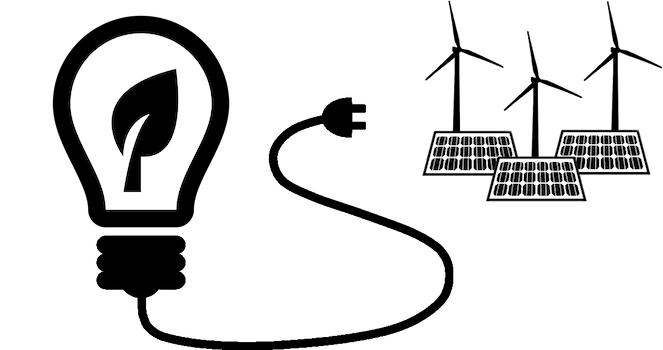Debate intensifies over using reprocessed spent nuclear fuel in small modular reactors
Photo shows a hexagonal fuel assembly for a nuclear reactor.
(NOTE: See also accompanying story, “Taking a close look at the benefits and risks of small modular reactors”).
Some scientists and civil society groups are calling for a ban on reprocessing spent nuclear fuel waste in Canada, amid signs the federal government may allow the practice to fuel small modular reactors.
If Ottawa greenlights reprocessing, it would be the first time in Canada the technology is allowed to produce fuel for commercial nuclear power reactors. This would be a significant difference in policy compared with that in the United States.
In 1977, the U.S. government imposed a moratorium on domestic commercial reprocessing, because of the risks of fission materials being diverted or stolen and contributing to worldwide nuclear weapons proliferation.
Opponents argue that reprocessing spent nuclear fuel would:
- use technologies unproven at industrial scale in new types of reactors that have never been built
- cost more than conventional nuclear fuel; would create new radioactive waste streams
- increase the risk of proliferation
Proponents — including Canada’s nuclear industry — argue reprocessing would
- use nuclear fuel more efficiently
- enhance national energy security
- significantly reduce the volume of highly radioactive nuclear waste that will need to be permanently stored deep underground, at a site yet to be determined
“If I were the Canadian government, I would negotiate carefully with the U.S. on this issue, because it is a very sensitive issue with other countries and the U.S.,” said Dr. Allison Macfarlane, PhD, professor and director of the School of Public Policy and Global Affairs at the University of British Columbia. A former chair of the U.S. Nuclear Regulatory Commission, she also served on the White House Blue Ribbon Commission on America’s Nuclear Future, created by the Obama Administration to recommend a new national policy on high-level nuclear waste.
Although reprocessing is technologically feasible, she concluded, “it’s not economical and it never will be."
In addition, she regarded proliferation as "a serious risk and not to be taken lightly. Canada would have to be thinking about the example it’s setting for other countries if it were to go ahead with this."
New policy doesn’t address reprocessing
Natural Resources Canada on March 31 posted to its website a new “modernized” Policy for Radioactive Waste Management and Decommissioning for Canada.
According to NRCan, since reprocessing is not currently used in Canada, it remains outside the policy's scope for now, although it does merit a mention. “Reprocessing in Canada would require consideration of all relevant factors by the federal government prior to its deployment, including ensuring the health, safety and security of people in Canada, and compliance with non-proliferation safeguards and international treaties."
That is not enough for Theresa McClenaghan, executive director of the Canadian Environmental Law Association.
“This policy is a betrayal of science and public trust,” she said. “It misses the mark and ignores the clear message from nuclear non-proliferation experts, conveyed to the government of Canada over the last three years, and reinforced by the submissions of the Canadian public, that the proliferation risk arises from the separation process itself, not from the alleged intent."
Despite the new policy not addressing reprocessing, several signs point to Ottawa leaving the door open to implementing the technology.
For example, the Canadian Nuclear Safety Commission already has regulations for nuclear fuel reprocessing plants and a process whereby developers can apply to build them. Two Canadian developers of small modular reactors (SMRs), which will use reprocessed nuclear fuel, have completed the first phase of the two-phase application process.
In addition, the federal Enabling Small Modular Reactors Program provided about $70 million to NRCan, including for “exploring fuel processing options for SMR technologies relevant to Canada,” and for “advancing the understanding of safeguards and proliferation-resistance of SMR fuel cycles.”
Also, the federal government's Budget 2023 proposed a refundable 30-per-cent tax credit for zero-emission technology manufacturers, including companies working on “processing or recycling of nuclear fuels and heavy water.”
Moreover, Ottawa has provided a $50.5-million repayable loan, through the Strategic Innovation Fund, to New Brunswick-based Moltex Energy, whose proposed SMR would use reprocessed spent fuel from Canada’s large conventional CANDU reactors.
“The regulations that are in place with the Canadian regulator does allow reprocessing today,” Rory O’Sullivan, CEO of Moltex Energy, told Research Money. “I expect that the government will support the initiative as long as we do it safely, in line with best international practices and regulations.”
Another SMR developer, ARC Clean Technology Canada Inc., has received $20 million from the New Brunswick Government to develop and deploy an “advanced” SMR at the Point Lepreau Nuclear Generation Station, owned by New Brunswick Power.
ARC plans to use a “pyroprocessing” technology, to reprocess the spent nuclear fuel from its ARC-100 reactor and continuously fuel the reactor.
In March, ARC signed a MOU with Invest Alberta, an Alberta government Crown corporation, to jointly support commercialization of the company's ARC-100 technology, with the aim of deploying a fleet of these reactors.
How viable is nuclear fuel reprocessing?
Gordon Edwards, co-founder and president of the Canadian Coalition for Nuclear Responsibility, says the government funding going to SMR developers is “stealing money from real solutions,” such as wind and solar energy and energy efficiency, that can help Canada achieve its climate goal to reduce carbon emissions by 40 percent by 2030.
“That’s not going to happen with new nuclear reactors,” Edwards said in an interview. “These are all basically ‘PowerPoint’ reactors, cooled only by ink and built only out of paper or electronic screens. How they work in the real world is another thing.”
Opponents of reprocessing also argue that Canada has significant reserves of uranium, which is slightly enriched and used to fuel the country’s existing fleet of 19 CANDU nuclear reactors, so there’s no need to reprocess nuclear fuel.
But Justin Hannah, director of the nuclear energy division at NRCan, said the federal government sees a gap in the availability and access for enriched uranium in both the near term and the longer term.
“We’re facing a paradigm shift, from using CANDU fuel to much more unique fuel applications,” he told a webinar presented by the Transition Accelerator.
If nuclear energy is to play a significant role in Canada and the world going forward, “we’re going to need to ensure that we have the right value chain behind that from a fuel perspective, to ensure that these reactors can receive fuel in a safe and timely manner,” Hannah said.
Moltex Energy’s proposed nuclear fuel recycling technology “has a lot of merit,” he said. “From a scientific and policy perspective, we need to put the time and effort and research in, to look at that and other technologies.”
According to a 2021 report by the International Atomic Energy Agency, “Reprocessing of spent nuclear fuel and recycling of separated usable materials are essential to reduce the environmental impact of nuclear power by reducing the volume and radiotoxicity of the final waste.”
Canada’s stockpile of 60,000 tonnes of spent nuclear fuel from CANDU reactors consists of some 3.2 million used fuel bundles about the size of fireplace logs, which are currently stored at nuclear power sites, either underwater in large pools or in dry casks on the surface. According to Dr. M.V. Ramana, professor in the School of Public Policy and Global Affairs at the University of British Columbia, reprocessing this spent fuel will create new radioactive waste streams — including radioactive off-gases, spent fuel salt waste, and irradiated graphite waste — that will need to be controlled and the waste treated before being stored in a deep geological repository.
“It’s all expensive to do, because you’re dealing with very difficult materials,” he told Research Money, adding that it will always be cheaper to simply use mined uranium to make nuclear fuel rather than reprocessing spent fuel. “There’s more than enough uranium for decades and decades, even if nuclear power were to grow, and nuclear power is not growing at this point.”
Dr. Frank von Hippel, PhD a senior research physicist and professor emeritus of public and international affairs at Princeton University, said reprocessing should be banned by Canada and globally. “There’s no private investment in reprocessing in the U.S. The last private investment was 50 years ago."
Jungmin Kang, independent consultant and former chairman of South Korea’s Nuclear Safety and Security Commission, said: “Pyroprocessing (which is one method for reprocessing spent nuclear fuel) will only make nuclear proliferation and the terrorism risk worse, and it does not reduce the environmental impacts of radioactive waste, at huge cost.”
Benefits versus risks of reprocessing
But John Gorman, president and CEO of the Canadian Nuclear Association, says reprocessing potentially has significant benefits and “merits real exploration and evaluation.”
Only a very small percentage of the natural uranium-based fuel is consumed in CANDU reactors, he told Research Money. “Reprocessing would enable us to use that spent fuel and get more out of it.”
This would reduce the amount of natural uranium needed for nuclear fuel, increase Canada’s energy security, and reduce the volume of used nuclear fuel waste that needs to be stored in a deep geological depository. Gorman dismissed critics’ concerns about proliferation of nuclear weapons as “an example of just misconceptions and fear-mongering and glossing over facts."
Unlike conventional reprocessing methods used to produce pure plutonium for making nuclear weapons, he said, the advanced “recycling process” to be used by Moltex Energy “has been designed to ensure that it is impossible to produce weapons-grade material."
A 2023 report by a committee of the U.S. National Academies of Sciences, Engineering, and Medicine looked at different nuclear fuel cycles and technology options, including the fuel-reprocessing technologies proposed by Moltex Energy and ARC. “While these technologies may provide some benefit in delaying direct use of the materials," the report stated, "there was consensus among the committee members that none provided significant proliferation resistance at this time.”
A 2021 report by the U.S.-based Union of Concerned Scientists went further. “Any nuclear fuel cycle that utilizes reprocessing and recycling of spent nuclear fuel poses significantly greater nuclear proliferation and terrorism risks than do [conventional] light water reactors without reprocessing," it stated, "because it provides far greater opportunities for diversion or theft of plutonium and nuclear weapon-usable materials.”
Nevertheless, Dr. Peter Ottensmeyer, PhD, a professor emeritus in medical biophysics at the University of Toronto, says reprocessing CANDU spent nuclear fuel would supply more than 130 times more energy than Canada has produced from nuclear power for 60 years.
“That is so huge that if you multiply it at the same power level, it would run energy at that level for about 4,000 to 5,000 years,” he said in an interview.
Using pyroprocessing to reprocess the spent fuel would cost about one-third the price tag of storing Canada’s stockpile of spent nuclear fuel in a deep geological repository, Ottensmeyer said.
Also, instead of having to store 60,000 tonnes of highly radioactive fuel in the repository, all that would be left after reprocessing this entire amount of spent fuel would be about 50,000 tonnes of pure uranium that is almost non-radioactive, he said. “You can wrap it in a piece of paper if you want to shield it.”
There would also be about 450 tonnes of ashes, along with radioactive fission products that decay over several months to up to 30 years rather than hundreds of thousands of years, Ottensmeyer said.
As for the risk of proliferation, he noted that Canada reprocessed irradiated fuel for years at the Canadian Nuclear Laboratories’ (CNL) nuclear reactor research and test site at Chalk River, Ontario, where various components were chemically separated to make valuable medical nuclear imaging isotopes. That reactor was shut down permanently in 2018, and decommissioning will continue for many years.
Edwards pointed out that Chalk River was the site of two nuclear accidents in the 1950s, including a meltdown of fuel rods and subsequent hydrogen explosions in December 1952. In 1958, there was a fuel rupture and fire in the reactor building. Both accidents required a major cleanup effort.
Also, despite the declaration of peaceful use, from 1955 to 1985, Chalk River facilities supplied 254.2 kilograms of plutonium, in the form of spent reactor fuel, to the U.S. Department of Energy, which used this material to produce nuclear weapons.
“It appears that many of the people in NRCan and also in the Prime Minister’s Office are completely blindsided on this issue,” Edwards said. “They don’t even realize that plutonium is a major concern, and that this form of reprocessing [proposed by SMR developers] is a major concern as well.”
R$
Events For Leaders in
Science, Tech, Innovation, and Policy
Discuss and learn from those in the know at our virtual and in-person events.
See Upcoming Events
You have 0 free articles remaining.
Don't miss out - start your free trial today.
Start your FREE trial Already a member? Log in
By using this website, you agree to our use of cookies. We use cookies to provide you with a great experience and to help our website run effectively in accordance with our Privacy Policy and Terms of Service.






